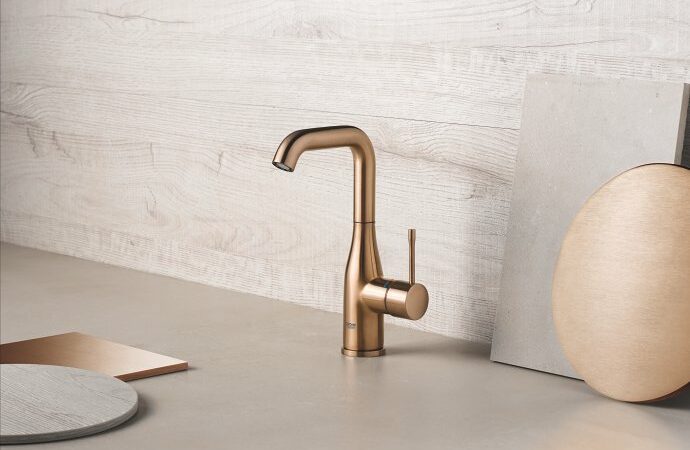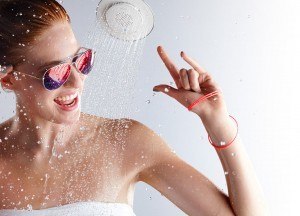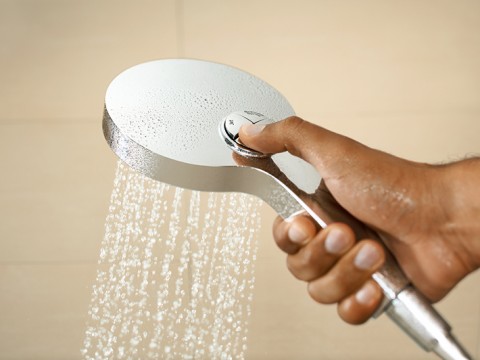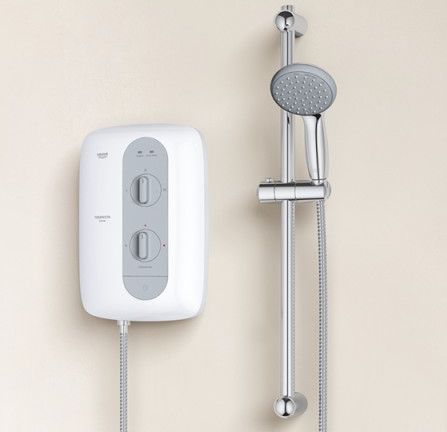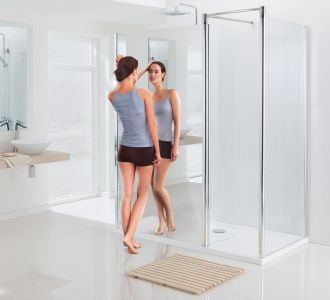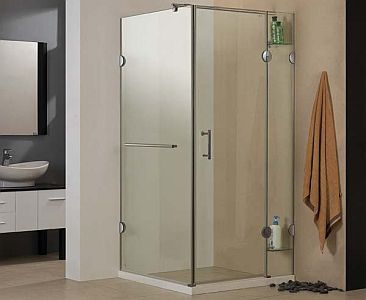Thermostatic Shower – Far more than a convenience
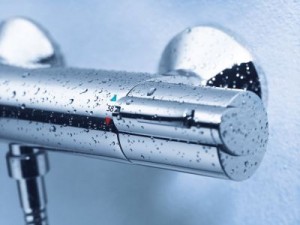 A recent survey has revealed that many consumers view a thermostatic shower as a convenience. Obviously, a thermostatic shower allows you to accurately set the temperature of the water, enabling you to relax and enjoy your shower without the need to adjust both the hot and cold water valves until you find the perfect temperature. However, the most important argument in favour of a thermostatic shower beyond doubt is safety. You can experience a constant temperature shower in peace, without worrying about getting scalded with hot water or shocked with cold water due to fluctuation in the incoming hot or cold water pressure. For example, when a toilet is flushed, cold water flows into the cistern tank to refill it, causing the water pressure in the cold water pipes to dip and less cold water reaching the shower valve. Similarly, if someone turns on a hot water elsewhere in the house, the opposite can happen.
A recent survey has revealed that many consumers view a thermostatic shower as a convenience. Obviously, a thermostatic shower allows you to accurately set the temperature of the water, enabling you to relax and enjoy your shower without the need to adjust both the hot and cold water valves until you find the perfect temperature. However, the most important argument in favour of a thermostatic shower beyond doubt is safety. You can experience a constant temperature shower in peace, without worrying about getting scalded with hot water or shocked with cold water due to fluctuation in the incoming hot or cold water pressure. For example, when a toilet is flushed, cold water flows into the cistern tank to refill it, causing the water pressure in the cold water pipes to dip and less cold water reaching the shower valve. Similarly, if someone turns on a hot water elsewhere in the house, the opposite can happen.
Startling thermal shocks from cold or hot water can trigger serious falls, particularly in older or physically challenged people. Children and the elderly are especially vulnerable to scald burns from hot water since they have thinner skin. Healthy adult skin requires 30 seconds of exposure to water at 55°C before third-degree burning occurs, but only 5 seconds at 60°C and less than one second at 70°C. Such scalds could occur at temperatures upto 10°C lower for children and the elderly, whose skin is more sensitive to extreme temperatures.
Thermostatic showers can shut off rapidly in the event of a hot or cold supply failure to prevent scalding or thermal shock. Furthermore, since you don’t need to continuously re-adjust the temperature due to changes in the water supply, there is a reduction in the amount of water and energy used, providing economic benefits for users. The response times of thermostatic showers vary – Grohe‘s TurboStat technology in particular claims to detect and correct changes in temperature in 0.3 seconds – plenty of time to avoid being scalded. In addition, if the TurboStat thermostat detects that either the hot or cold water is turned off, the entire shower is shut off.
Some might argue that the risk from scalding exists with manual basin and kitchen mixers as well. While that is theoretically true, one can’t deny the fact that the major risk is indeed in the shower, when the entire body is exposed to the water temperature and reaction times are relatively higher.

